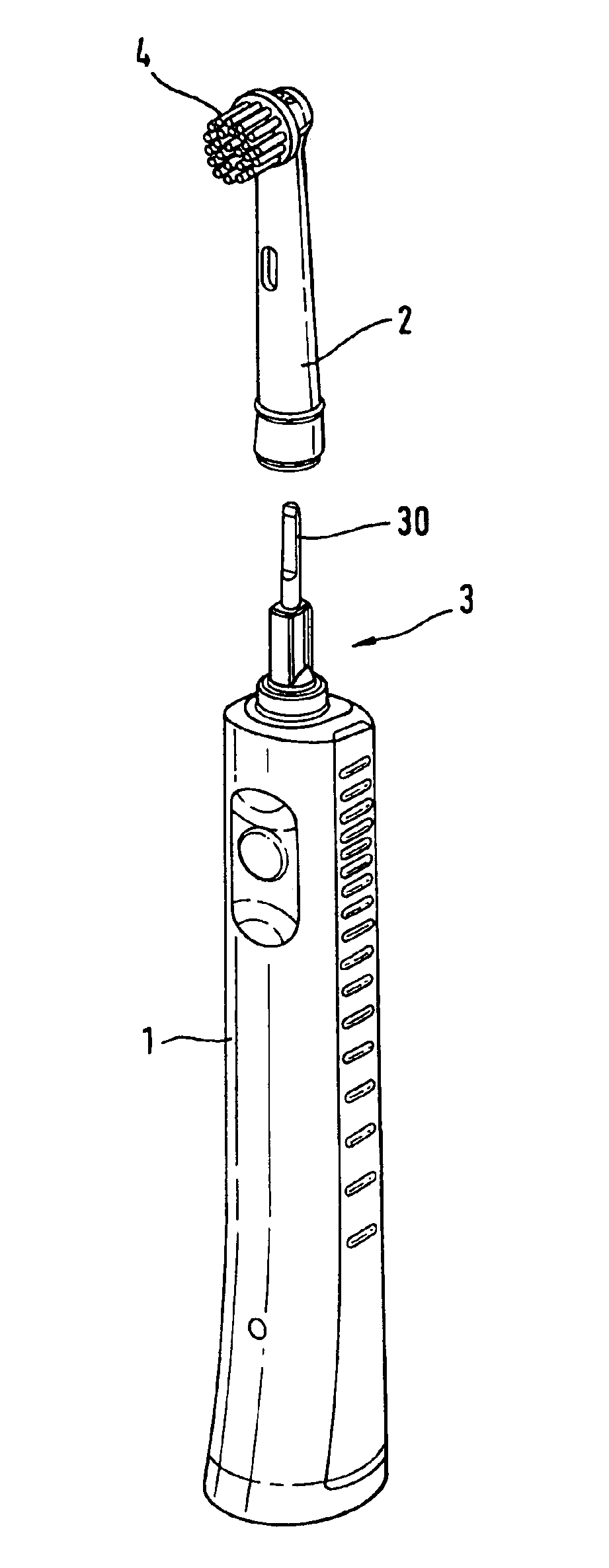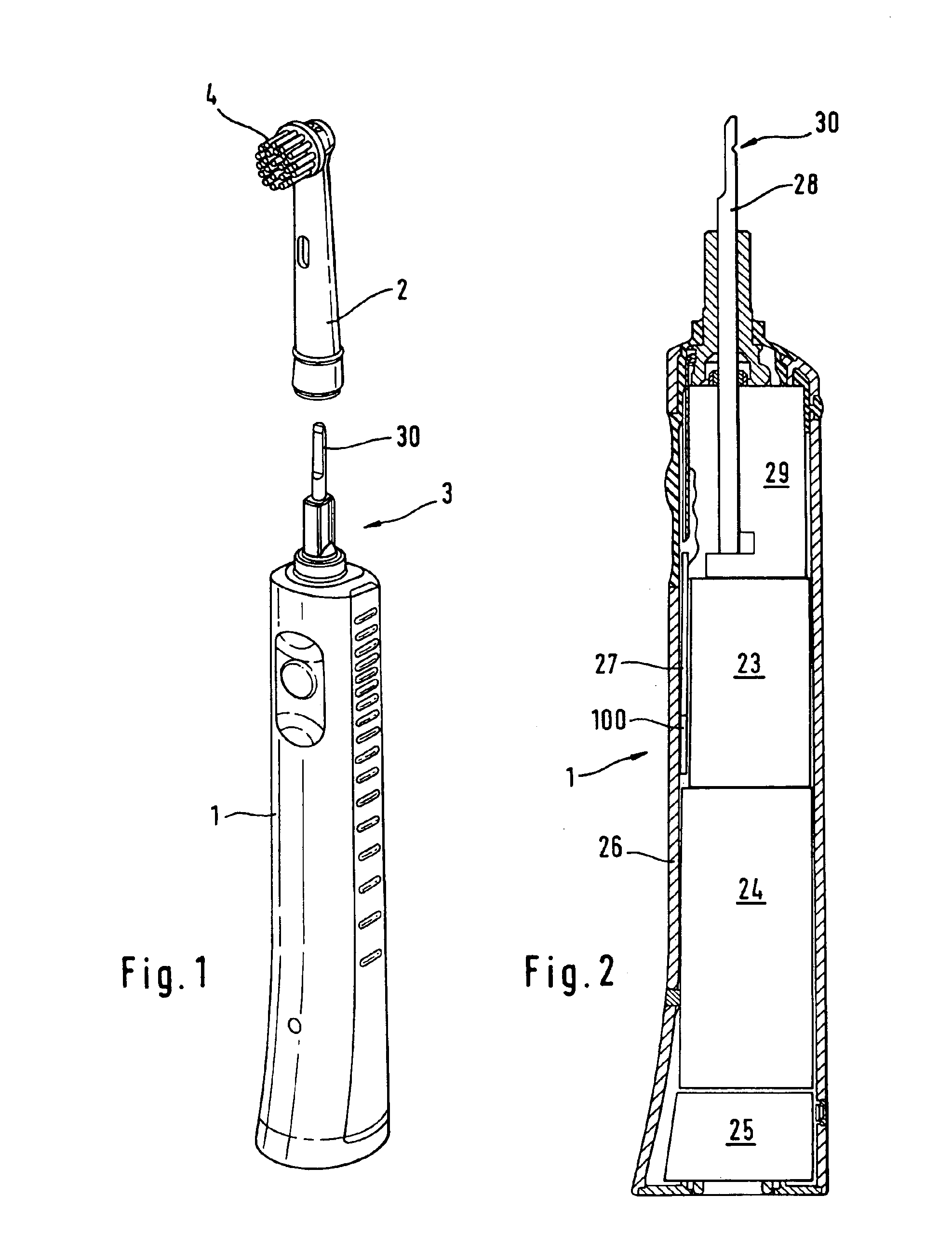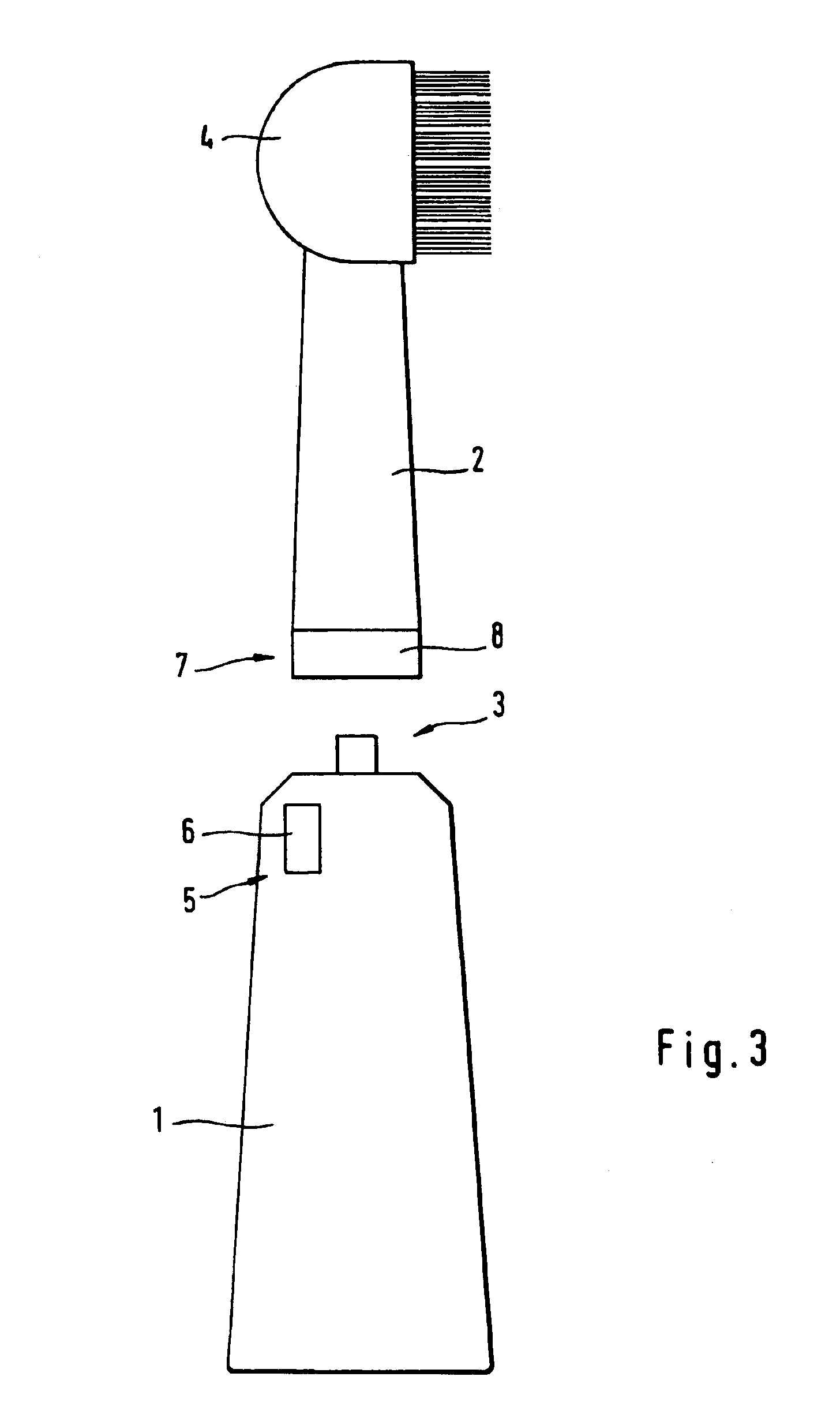Electric dental cleaning device
a cleaning device and electric technology, applied in the direction of brushes, vehicle maintenance, sport apparatus, etc., can solve the problems of inability to inadvertently prematurely discharge storage batteries, etc., and achieve the effects of facilitating the reading of encoding, enhancing user comfort, and gentle cleaning operation
- Summary
- Abstract
- Description
- Claims
- Application Information
AI Technical Summary
Benefits of technology
Problems solved by technology
Method used
Image
Examples
Embodiment Construction
[0076]The electric toothbrush shown in the Figures has a handle section 1 with a closed housing 26 accommodating, among other components and as illustrated in FIG. 2, in a manner known in the art an electric motor 23, a storage battery 24 adapted to be coupled to a charging station through a charging module 25 disposed at the bottom, and a control device 27 which may possess a printed circuit board or microprocessor. Various brush attachments 2 are seatable upon the end of the handle section 1 to function as brushing or cleaning tools. By means of a coupling device 3 the brush attachment 2 can be mechanically coupled to the handle section 1 in order to transmit the driving motion of the electric motor to the brush head 4 of the brush attachment 2. The coupling device 3 which may be made of one or several parts or pieces comprises a positive- or frictional-engagement element for positioning the cleaning tool body in its proper location and, in addition, a drive coupling which transmi...
PUM
 Login to View More
Login to View More Abstract
Description
Claims
Application Information
 Login to View More
Login to View More - R&D
- Intellectual Property
- Life Sciences
- Materials
- Tech Scout
- Unparalleled Data Quality
- Higher Quality Content
- 60% Fewer Hallucinations
Browse by: Latest US Patents, China's latest patents, Technical Efficacy Thesaurus, Application Domain, Technology Topic, Popular Technical Reports.
© 2025 PatSnap. All rights reserved.Legal|Privacy policy|Modern Slavery Act Transparency Statement|Sitemap|About US| Contact US: help@patsnap.com



